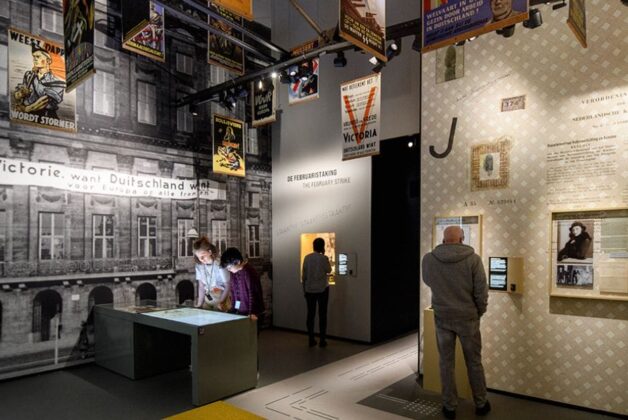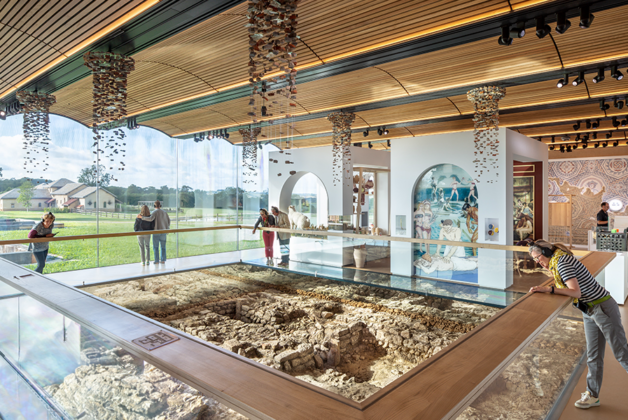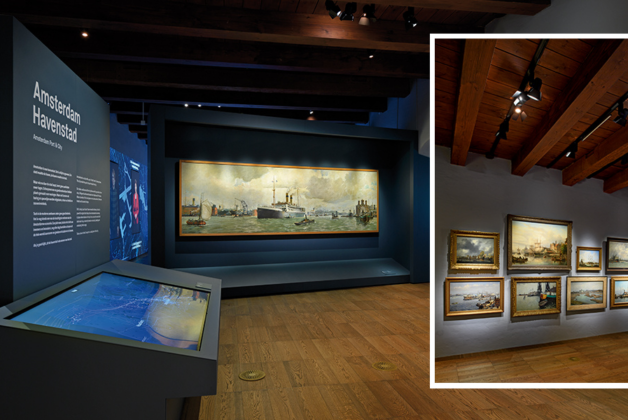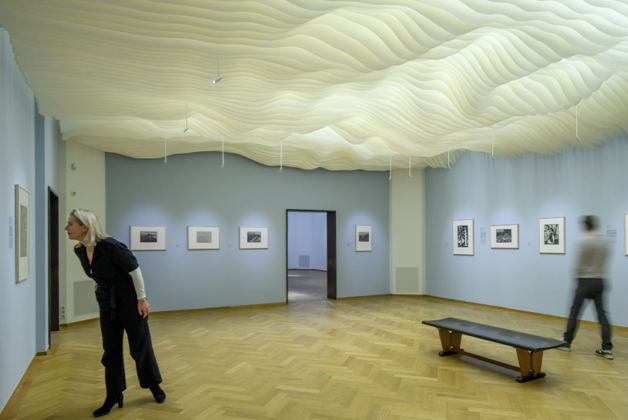Image: Museum Huis van het Boek
Museum Huis van het Boek has the Topaz scoop! CLS LED explains how the newest addition to the broad product portfolio of CLS enhances the preservation of the delicate artefacts on display.
Established in the attractive former residence of Baron Van Westreenen van Tiellandt (1783-1848), Museum Huis van het Boek focuses on the written and printed book in the past and present. The outward form and development of book design is the main focus. About four times a year, the museum organises temporary exhibitions on both old and new books.
To fill these exhibitions with the best-preserved pieces possible, various measures are taken to preserve and restore the old books. For instance, newly acquired archival items are cleaned and packed in acid-free covers and boxes and treated by a paper conservator where necessary. Many original drafts date from the pre-digital era and were assembled with scissors and the glue pot (or tape). As the glue dries, the integrity of these pieces is at risk of being lost. In addition, older and fragile tapes will be fitted with a cover box in the coming years to prevent further deterioration in condition.
To further maintain the quality of the archival items on display, the museum has replaced the lighting in the back room at a permanent exhibition. For this, the museum approached the firm 50LUX Lighting Design and Advice, which applied the latest fixtures on the market in this historic museum, supplied by Lichtpunt. 50LUX has already had the opportunity to work on a temporary exhibition at this museum. Based on this, the conversation started for the new lighting in the back hall.

In their search for the most appropriate lighting solution for the fragile exhibits, they consulted with the client to look at various options in both a new layout of the 3-phase track and types of LED fixtures, which had to have a long service life and high colourfastness. They added their own requirements for a zoomable fixture with the possibility of accessories. They then used demos with different fixtures and colour temperatures to see how the pieces would look best.
Out of this came a newly installed rail, in which 50LUX used the CLS Topaz, a fixture that is new to CLS’ wide range. This fixture series offers infinite possibilities to lighting designers to illuminate a space exactly as they wish, with four variants, seven control options and various accessory options, including a profile accessory with ‘blades’, to cut the light perfectly. The company says it enjoys working with CLS fixtures more often: ‘We have been working with CLS products for years and because there are often discussions with users, like us, you can see that reflected in the products on the market. The quality has proven itself over the years. In short, approachable and reliable.’
In this project, 70 pieces of CLS Topaz Zoom fixtures were chosen with a colour temperature of 3000K controlled by Casambi via Bluetooth, which allows the lighting designers to fade in the lighting when visitors walk into the room. Unlike the widely known CLS Jade Series, the CLS Topaz Series offers a lower output, which in this space gave a better outcome on the artworks and the museum found it to be an aesthetically pleasing fixture in this space. 50LUX: ‘In a test with several other brands, in terms of light colour, the Topaz proved to do best on the artworks in this room. A mix of paintings, coins, books and fossils.’

The operating system Casambi was chosen because of the museum’s requirements. 50LUX: ‘The museum wanted more choice of lighting modes and that when there are no visitors in the room that the light goes off. Besides this benefit, Casambi was the only easy option for more switching options without any modifications to the existing e-installation.’ This is not only a more energy-efficient approach, which significantly reduces energy consumption and therefore costs and the museum’s carbon footprint, but also one that contributes greatly to the preservation of the collection. LED fixtures produce significantly less heat than the previously installed traditional halogen lamps, and by switching off the lighting when there are no visitors in the room, the collection is preserved as much as possible. In particular, the complete absence of UV radiation is a huge improvement! UV radiation was the most destructive component of halogen lamps.
Although the lighting designers were given the freedom in this listed building to reposition the 3-phase rails, this remained a challenge. 50LUX: ‘The cassette ceiling dictated the rail in combination with the old location of the rail and where voltage was already present in the ceiling. All this to really avoid demolition. You don’t know beforehand what you will find at the top of the ceiling, but we arrived at a nice placement.’ In addition, the firm points out that in the room, several paintings hang really high, which makes reflections quickly occur. In combination with the ceiling, the rails cannot always be placed in the desired place, the place where the reflection is the least. In this case, however, right in front of the art and at the entrance, the reflection-free lighting worked fine.
What the designers liked best about this project was the result: ‘It’s a space where there were real gains to be made with new lighting. So, you see results from your work. It is a place where the client’s solutions were seriously considered and together, we were able to achieve a beautiful end result. The mix of all kinds of objects is then a nice bonus.
The result is exactly what we had hoped for. It is nice that a modern system has been hung without it being noticeable that there are fixtures of today in a very old building’. They say they have received nothing but positive reactions to their work from the museum and its (former) employees. ‘It really lives that something has been done about it. The art is finally visible again.’





